2025 China Attosecond Laser Facility Market: From Laboratory to Emerging Application Ecosystem
source:ChinaIRN.com
keywords:
Time:2025-11-20
Source: ChinaIRN.com 14th Oct 2025
When the 2023 Nobel Prize in Physics was awarded to pioneering scientists in the field of attosecond lasers, this cutting-edge technology—once confined to laboratories—suddenly captured global attention. An attosecond (1 attosecond = 10⁻¹⁸ seconds), a time scale far shorter than a femtosecond, is the smallest unit of time that humans can currently detect and control. Attosecond laser facilities, as large-scale scientific devices for generating and applying attosecond light pulses, are emerging as "super microscopes" for basic scientific research and cutting-edge technological innovation.
With the acceleration of China's technological innovation and the launch of forward-looking layouts under the "15th Five-Year Plan," the market prospects and strategic value of attosecond laser facilities urgently require in-depth evaluation. Zero power Intelligence’s newly released report, In-depth Research and Supply-Demand evaluation Report on China's Attosecond Laser Facility Market (2025-2030), provides a systematic analysis of this field. Combining the core insights of the report with the latest global technological trends, this article aims to decode this mysterious yet crucial frontier market.
1. Understanding Attosecond Laser Facilities: More Than Just "Faster" Lasers
Attosecond laser facilities are not mere upgrades of conventional lasers, but represent a revolutionary observational capability. Their core value lies in the ability to directly capture instantaneous images of electron motion within atoms—much like using a high-speed camera to shoot slow-motion footage. This capability enables scientists to:
Track electron dynamics in real time: Observe electron transfer, chemical bond breaking and formation during chemical reactions, thereby achieving active control of chemical processes.
Reveal novel properties of quantum materials: In superconductors, topological insulators, and other materials, electron behavior on the attosecond timescale holds the key to understanding their exotic physical properties.
Advance ultra-precise measurements: Achieve more accurate measurements of physical constants at the attosecond temporal scale and nanometer spatial scale, even challenging the fundamental laws of modern physics.
Thus, attosecond laser facilities are typical large-scale scientific installations (mega-science facilities) that integrate the most advanced technological achievements across multiple disciplines—including ultrafast laser physics, precision optical engineering, ultra-high vacuum technology, and advanced computing. They serve as a hallmark of a nation’s comprehensive scientific and technological strength.
2. Market Status: From Laboratory to the Emerging Stage of an Application Ecosystem
Unlike the mature laser industry, the attosecond laser facility market is in a critical transition phase—shifting from state-led basic research infrastructure to a collaborative application ecosystem involving industry, academia, and research institutions.
Global Competitive Landscape: Technology powerhouses such as the EU, the United States, and Japan have elevated the construction of attosecond laser facilities to a national strategic level. They have invested in multiple large-scale attosecond light source facilities and established close international cooperation networks. In recent years, China has rapidly caught up in this field, deploying several world-class attosecond laser installations—such as projects under the ongoing construction of comprehensive national science centers—marking its entry into the global first tier.
Domestic Driving Forces: The market’s core driver stems from national strategic will. The "Ten-Year Plan for Basic Research" and the direction of "strategic technological innovation" outlined in the 14th Five-Year Plan have provided a solid policy and funding foundation for mega-science facilities like attosecond lasers. Key initiatives, including the Science and Technology Innovation 2030—Major Projects and the Major Scientific Research Instrument Development Program of the National Natural Science Foundation of China, have also acted as important catalysts. Recently, "new technological infrastructure" plans proposed by multiple regions have prioritized the construction of mega-science facility clusters, with attosecond laser facilities as an indispensable component.
According to Zero power Intelligence’s report, the current market’s supply-demand imbalance is mainly reflected in two aspects: On one hand, large-scale facilities funded by the state are gradually forming initial supply capacity; on the other hand, ultrafast measurement demands from universities, research institutes, and even some cutting-edge enterprises are rapidly emerging. However, an improved intermediate ecosystem is still needed to efficiently utilize these facilities and translate scientific discoveries into technological achievements.
3. Core Driving Forces: A Duet of Scientific Curiosity and Industrial Demand
National Strategic Demand for Scientific and Technological Self-Reliance
Achieving independent control in cutting-edge technology is a core national interest. Possessing indigenous attosecond laser facilities means seizing the initiative in original innovation for new materials, new drugs, and next-generation information technology—avoiding being bottlenecked in critical areas. This is not merely a scientific issue, but a matter of strategic security.
Source-Driven Traction for Cutting-Edge Industrial Innovation
The application prospects of attosecond lasers are gradually extending from pure basic research to industrialization:
Semiconductor Industry: As chip manufacturing processes approach physical limits, detecting and manipulating electron behavior has become crucial. Attosecond lasers are expected to enable the development of next-generation semiconductor processing and inspection technologies.
Precision Medicine and Pharmaceuticals: Understanding ultrafast charge transfer processes in biomacromolecules can open new pathways for drug R&D and disease mechanism research.
Energy Sector: Electron transfer is a core link in energy conversion processes such as photosynthesis, new photovoltaic materials, and catalytic reactions—attosecond technology is poised to deliver revolutionary breakthroughs.
Synergistic Effects of Mega-Science Facility Clusters: Attosecond laser facilities are often deployed in coordination with other mega-science facilities such as synchrotron radiation light sources and free-electron lasers, forming an integrated research platform covering different temporal and spatial scales. This creates a "1+1>2" cluster innovation effect, attracting top global talents and projects, and driving the development of regional technological innovation ecosystems.
4. Competitive Landscape and Supply Chain: High Concentration and Technological Barriers
The attosecond laser facility market features extremely high technological barriers and a unique participant structure.
Supply Side: Concentrated "National Team" and Top-Tier Teams
The main entities planning and constructing these facilities are national-level research institutions, high-level research universities, and comprehensive national science centers supported by local governments. Market competition is not traditional enterprise rivalry, but a contest among top research teams in terms of technical routes, scientific objectives, and engineering implementation capabilities. A handful of research institutions with profound accumulation in ultrafast laser technology are the core technical suppliers in the current market.
Supply Chain: Integration Challenges of Cutting-Edge Technology
An attosecond laser facility involves multiple subsystems, including femtosecond laser pump sources, ultra-high vacuum chambers, precision optical components, and diagnostic measurement equipment. Its supply chain is characterized by high customization, with extremely stringent performance requirements for key components (such as high-power femtosecond lasers and high-precision optical elements). Currently, some core components still rely on leading international specialized manufacturers, but domestic substitution is accelerating with national policy support. Zero power Intelligence’s report emphasizes that the ability to achieve independent control of the supply chain is a key dimension for assessing future market risks and opportunities.
5. Challenges and Risks: An Inevitable Journey to the "Summit of Technological Everest"
Extremely High Technical Complexity: Every link—from stable femtosecond laser sources to the generation, measurement, and application of attosecond pulses—is fraught with challenges, requiring in-depth collaboration of top interdisciplinary talents.
Massive Investment Scale and Long Return Cycle: As capital-intensive and technology-intensive projects, these facilities entail high construction and maintenance costs. Direct economic returns are difficult to measure in the short term, with value manifested more in long-term scientific and social benefits.
Talent Shortage Bottleneck: Top scientists and engineers capable of designing, constructing, operating, and leveraging attosecond facilities for cutting-edge research are globally scarce, leading to fierce talent competition.
Challenges in Cultivating the Application Ecosystem: Lowering the threshold for use—enabling researchers in materials science, chemistry, biology, and other fields (non-laser physics experts) to access these facilities conveniently—is key to unlocking their enormous potential.
6. Future Trend Forecast (2025-2030): The Critical Five Years for Building an Innovation Ecosystem
Zero power Intelligence’s report offers the following forward-looking judgments for the next five years:
Facility Construction Enters a "Blowout Period": With the implementation of the "15th Five-Year Plan," China is expected to witness another wave of attosecond laser facility development. More regional attosecond light sources focusing on specific application areas will be put on the agenda.
More Clear Application Orientation: The construction goals of facilities will shift from "pursuing performance indicators" to "solving specific scientific problems and industrial technical challenges," with increasingly close interaction with industry.
Miniaturization and Commercialization Germination: As technology matures, some attosecond measurement technologies may develop toward miniaturization and tabletopization, spawning technology enterprises that provide ultrafast detection solutions for specific industrial scenarios.
Coexistence of International Cooperation and Competition: China will continue to deeply participate in the global attosecond science network, while its capacity to initiate international mega-science programs based on domestic facilities will be significantly enhanced.
Conclusion: Layout Frontier Scientific and Technological Infrastructure with a Strategic Vision
The attosecond laser facility market far exceeds the scope of ordinary commodity markets. It represents a strategic investment in a country’s future scientific and technological competitiveness and innovation potential. For local governments, large research institutions, top universities, and forward-looking investors, understanding the development logic of this market means seizing the opportunity to layout next-generation basic research capabilities and the source of disruptive technologies. However, participation in this field requires extremely high professional cognition and strategic perseverance.
 4th Collaboration! What Brought the Global Laser Academic Guru to Chinese Univs & Leading Firms?
4th Collaboration! What Brought the Global Laser Academic Guru to Chinese Univs & Leading Firms?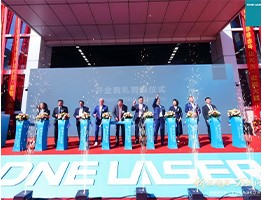 DNE Laser Foshan Smart Manufacturing Base Grand Opening: New Brand Image Starts New Journey
DNE Laser Foshan Smart Manufacturing Base Grand Opening: New Brand Image Starts New Journey Live: DMP GBA Expo – Laser Hard Tech Leads Industrial Smart Manufacturing New Wave
Live: DMP GBA Expo – Laser Hard Tech Leads Industrial Smart Manufacturing New Wave Scientists Develop Palm-sized Short-pulse Laser System: Efficiency Increased to 80%
Scientists Develop Palm-sized Short-pulse Laser System: Efficiency Increased to 80% Global LiDAR Giants Engage in Escalating Patent Wars
Global LiDAR Giants Engage in Escalating Patent Wars
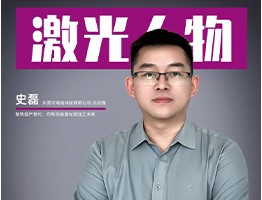 Shi Lei (Hipa Tech): Focus on Domestic Substitution, Future Layout in High-End Laser Micromachining
Shi Lei (Hipa Tech): Focus on Domestic Substitution, Future Layout in High-End Laser Micromachining Optizone Technology: 17 Years Devoted to Optics – High-Power Optics Mass-Production Pioneer
Optizone Technology: 17 Years Devoted to Optics – High-Power Optics Mass-Production Pioneer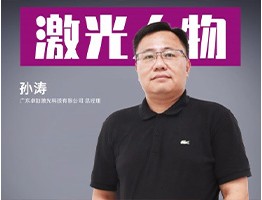 Zhuojie Laser: Breaking barriers via tech breakthroughs, aiming to lead high-end light sources
Zhuojie Laser: Breaking barriers via tech breakthroughs, aiming to lead high-end light sources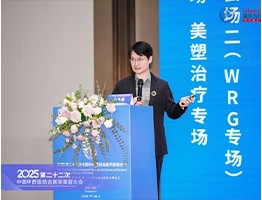 Dr. Sun Linchao: Pioneer and Leader in China's Field of Medical Aesthetic Laser Therapy
Dr. Sun Linchao: Pioneer and Leader in China's Field of Medical Aesthetic Laser Therapy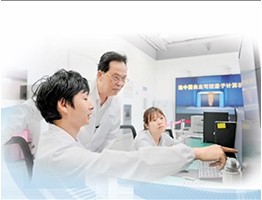 Guo Guangcan, CAS Academician & USTC Professor: Four Decades Chasing Quantum "Light"
more>>
Guo Guangcan, CAS Academician & USTC Professor: Four Decades Chasing Quantum "Light"
more>>
